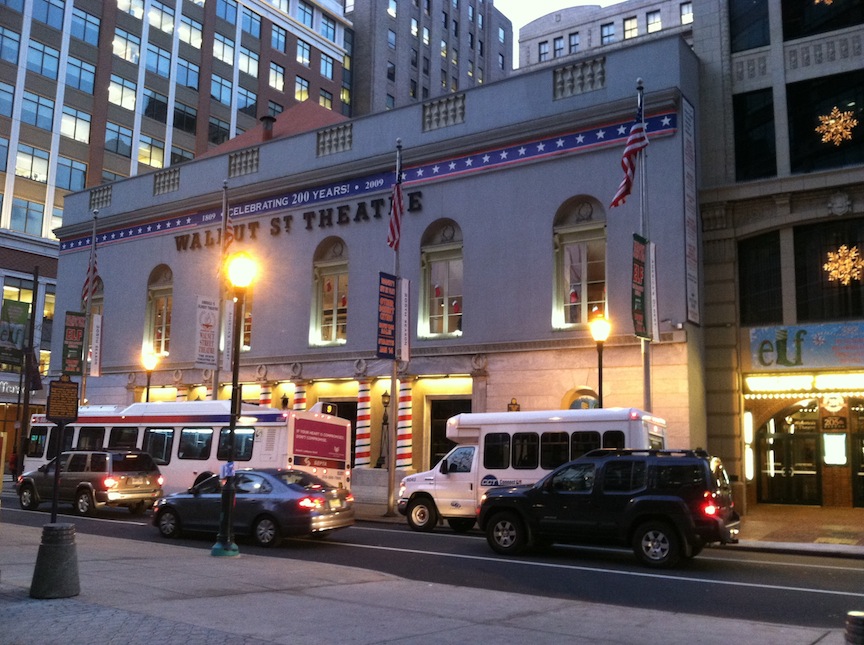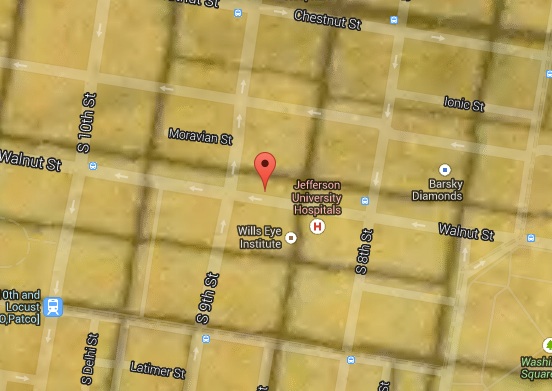The Walnut Street Theatre proclaims itself to be the oldest theatre in the United States. So it should come as little surprise that we don’t really know what stood at 9th & Walnut before the theatre’s conception. Still, the Walnut has undergone quite a few changes over its long and storied history. The image below, taken from John Hills’ 1808 Map of Philadelphia, shows absolutely nothing and makes us wonder why Hills went to the trouble. However, this location is only one year removed from the theatre’s 1809 construction.
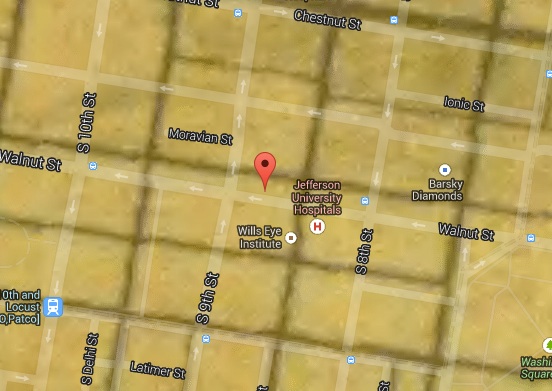
The following year, according to Wikipedia, French touring equestrian circus company Pepin and Breschard brought their operation to Philadelphia. With it, they brought the construction of a new theatre. The sketch below, taken from the Walnut Street Theatre website, shows the theatre in its earliest days, when it was known as the New Circus.
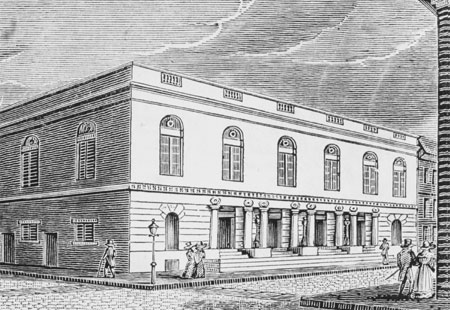
Renovations thereafter saw the addition of an orchestra pit and a second stage as well as the transition toward serious theatre. Indeed, the 1812 reopening of the theatre under the name The Olympic was attended by no less than President Thomas Jefferson. Walnut Street tells that the Olympic served as a legitimate theatre through 1820, at which point it adopted the name Walnut Street for the first time. This lasted for only two years, at which point, the building once again came to house circus performances under the name The Olympic. But once again, renovations would be conducted in 1828. These would (again) return the venue to the name Walnut Street and the preoccupation of putting on serious theatrical productions. The sketch below, taken from the Philadelphia Department of Records, shows the building as it appeared during this time.
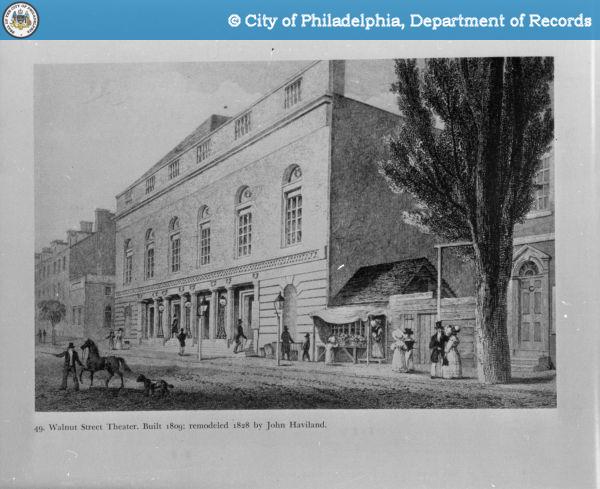
During the coming years, the Walnut would be the site of countless milestones in American theatrical history, including the first Shakespearean performances in Philadelphia and the launching of countless legendary stage careers. The 1865 image below, taken from the Walnut Street Theatre picture gallery, is identified as the first known photograph of the venerable theatre. As you probably guessed, this picture was taken shortly after a round of renovations.
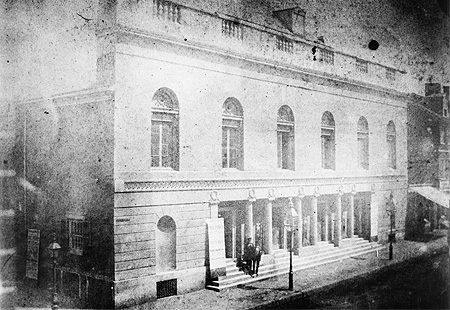
By the turn of the century, Walnut Street was already widely recognized as a place of great historical importance. In addition to its continued use for theatre, it was a venue for historical civic events as well. The image below, taken from the Walnut Street Theatre website, shows a gathering of Civil War veterans in 1899.
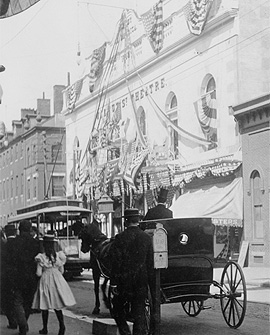
The Library of Congress photo here below shows the building in 1913.
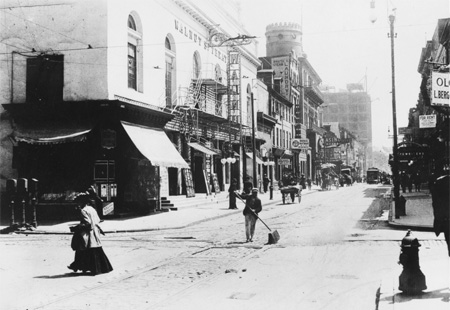
Major interior renovations would be conducted in 1920, including the installation of the ornate chandelier which would hang from the building’s dome for 47 years.
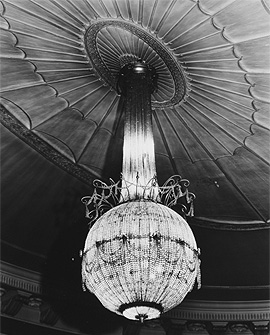
By 1967, the recently designated National Historic Landmark would become the subject of its most extensive renovations yet. The image below, taken from the Philadelphia Department of Records, show construction in 1971.
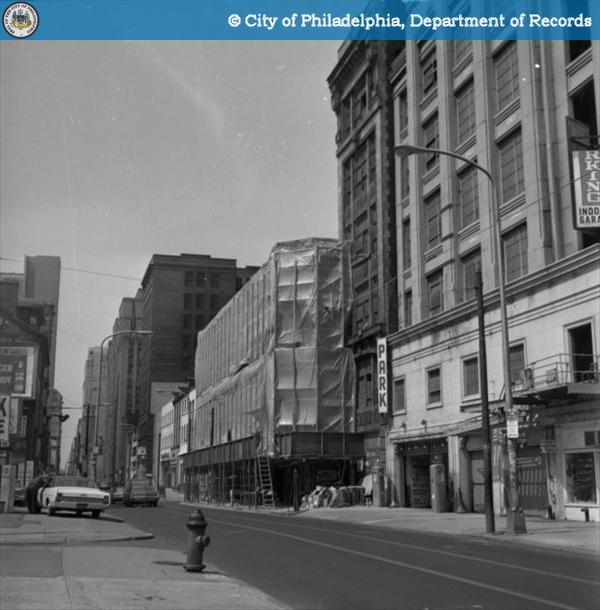
The renovations transformed the Walnut into a complete performing arts center suited for theatre, opera, dance, music and film. It was also deemed an appropriate venue for the first presidential debate of the 1976 electoral season. The Walnut Street Theatre tells that President Ford and Democratic challenger Jimmy Carter met for a televised exchange that was marred by a 30-minute sound system malfunction.
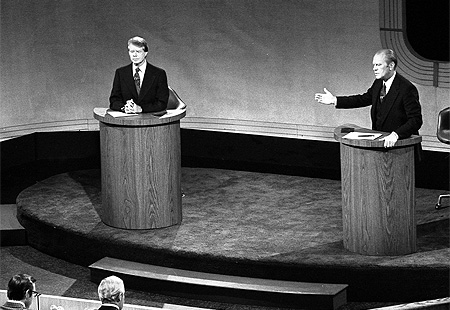
Additional renovations in 1998 would bring the Walnut Street Theatre to present form. The Walnut Street Theatre is today known as the oldest continually operating theatre in the United States. But of course, like so many aging icons in show business, she’s had a lot of work done.
